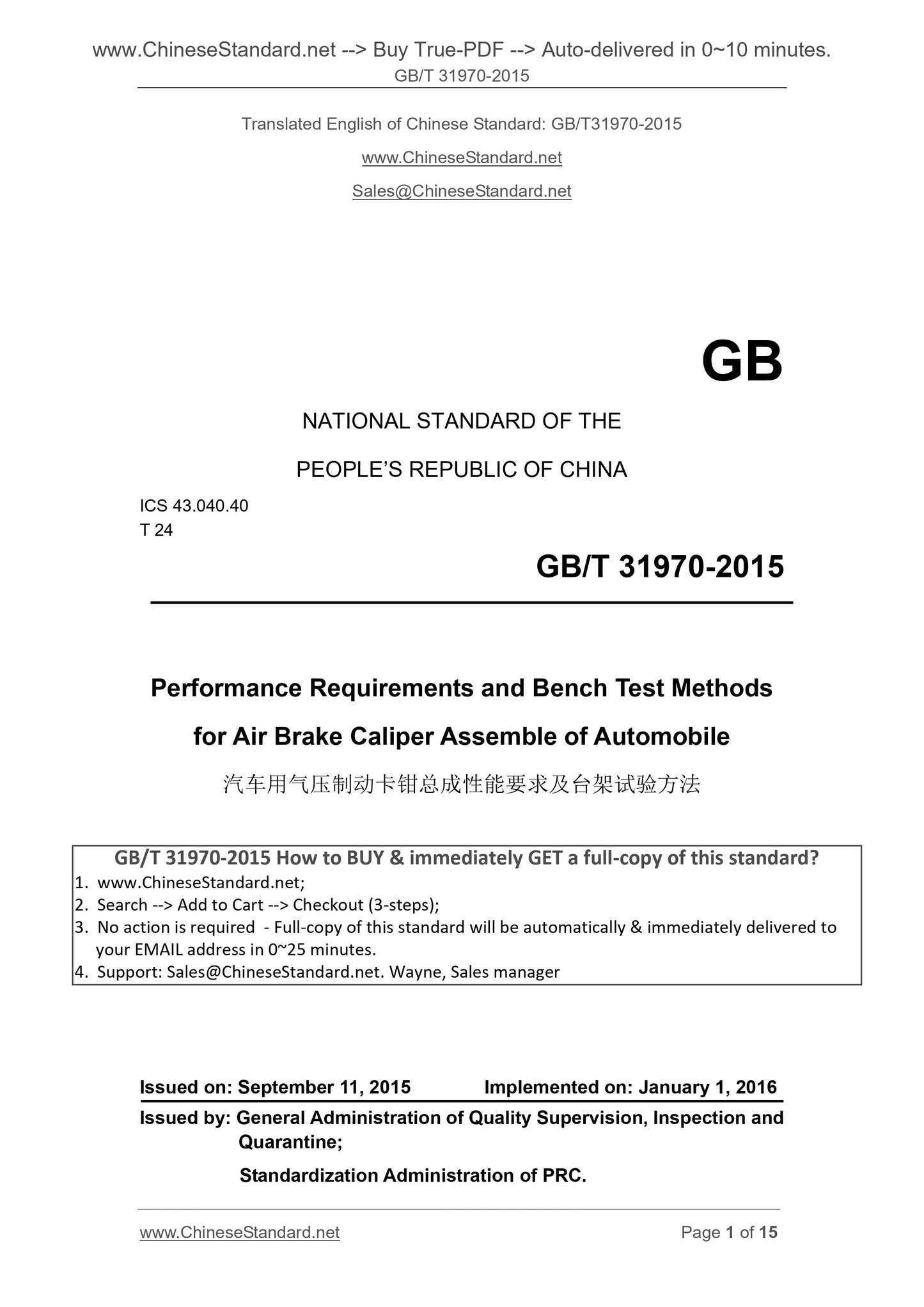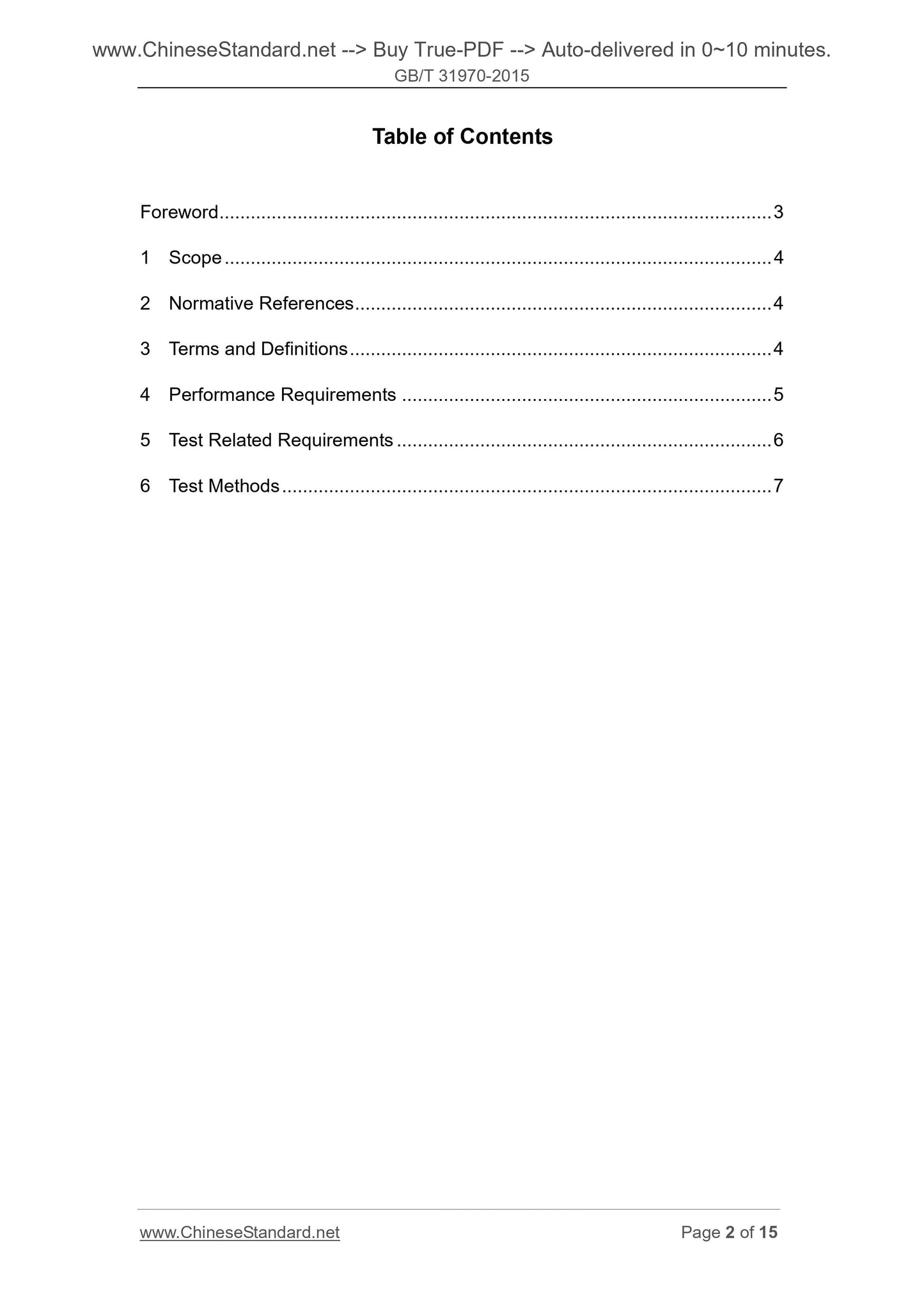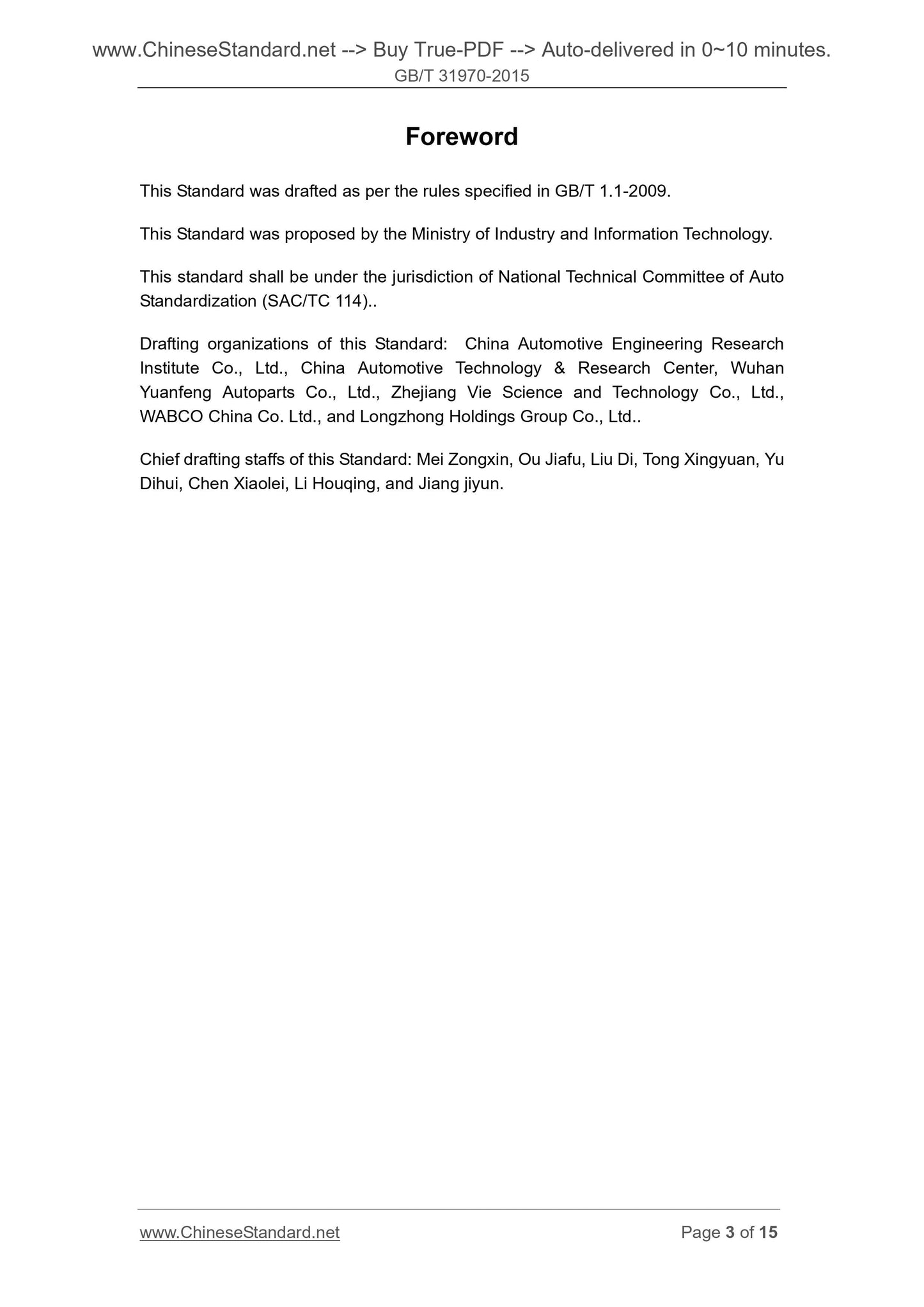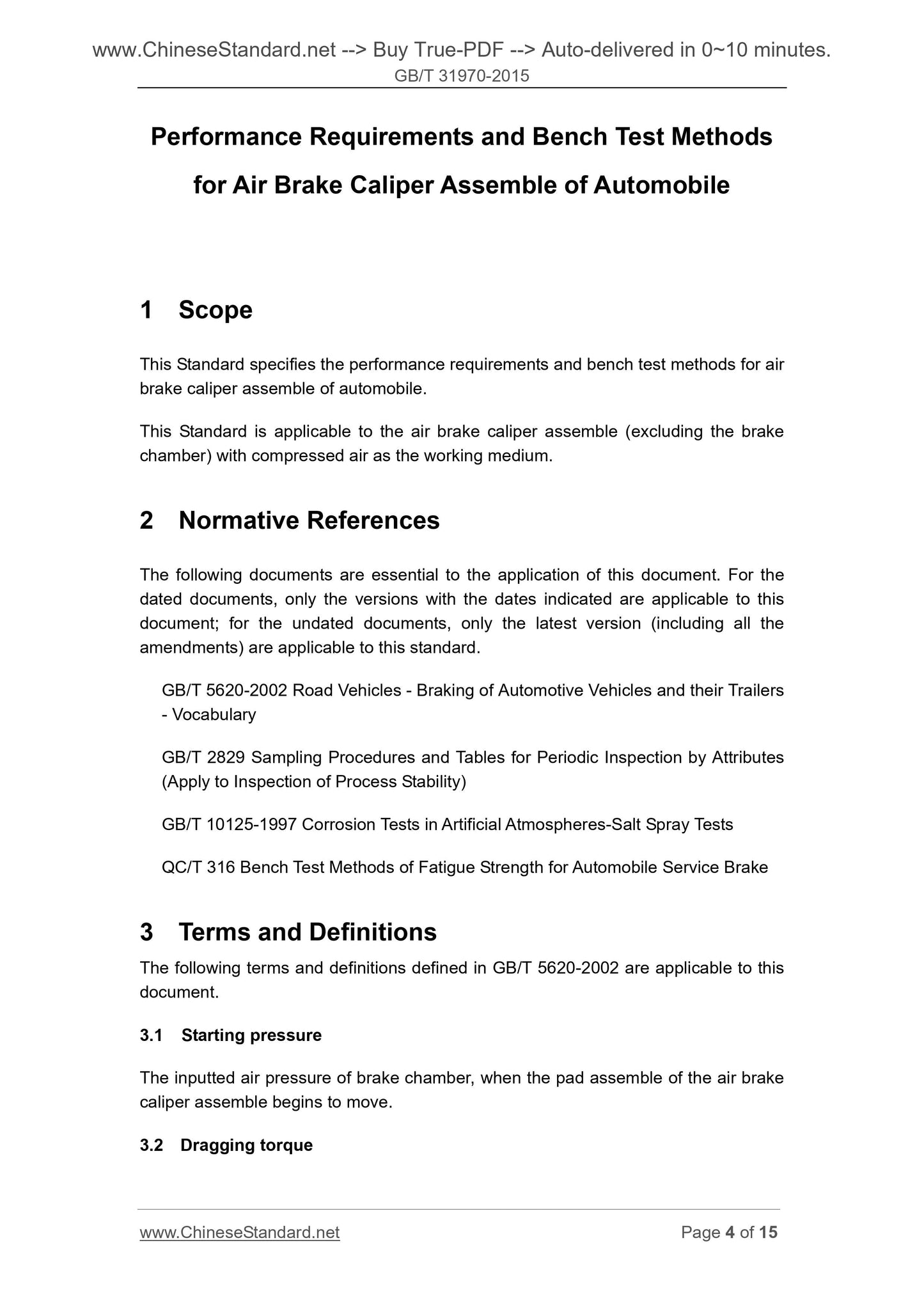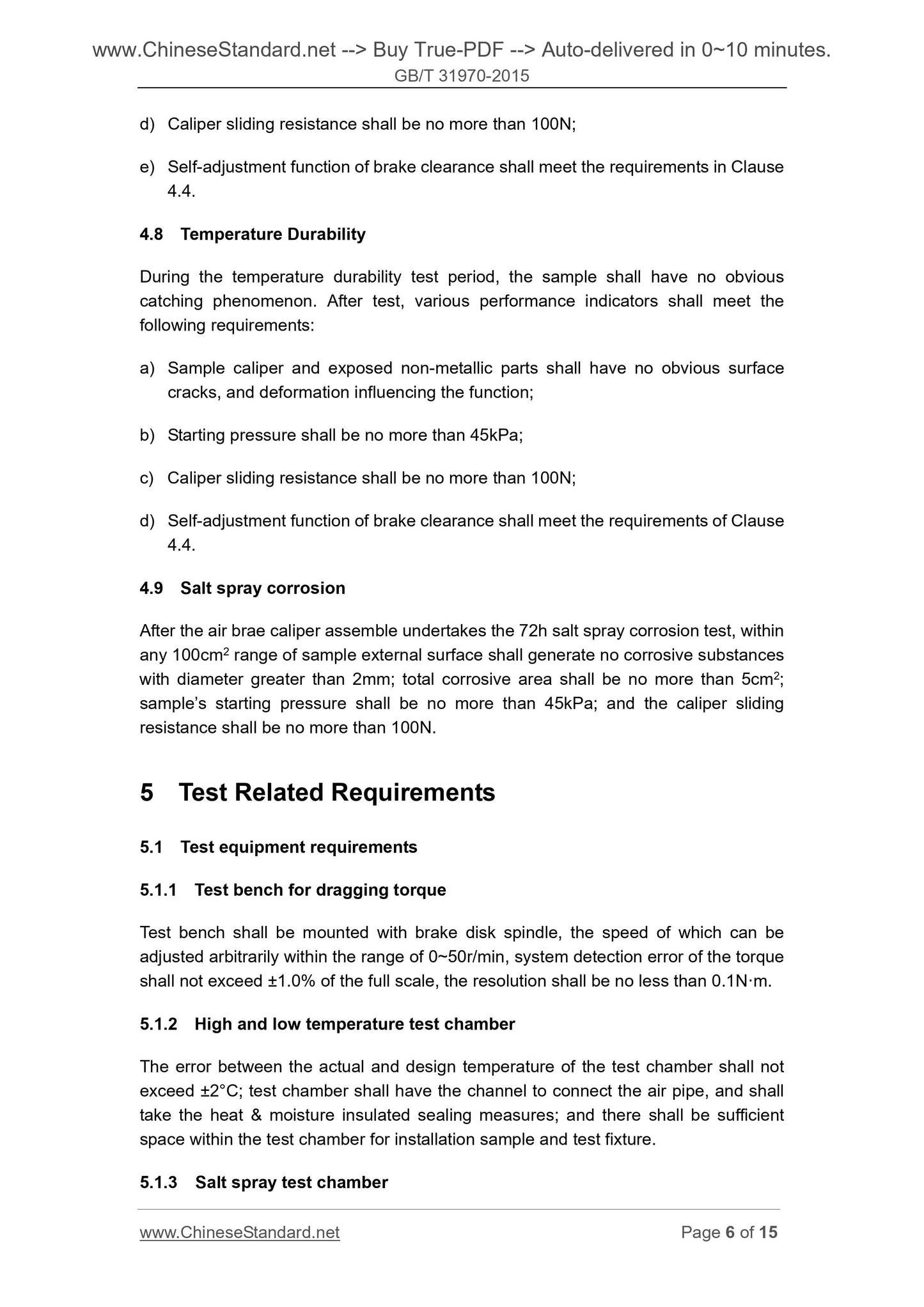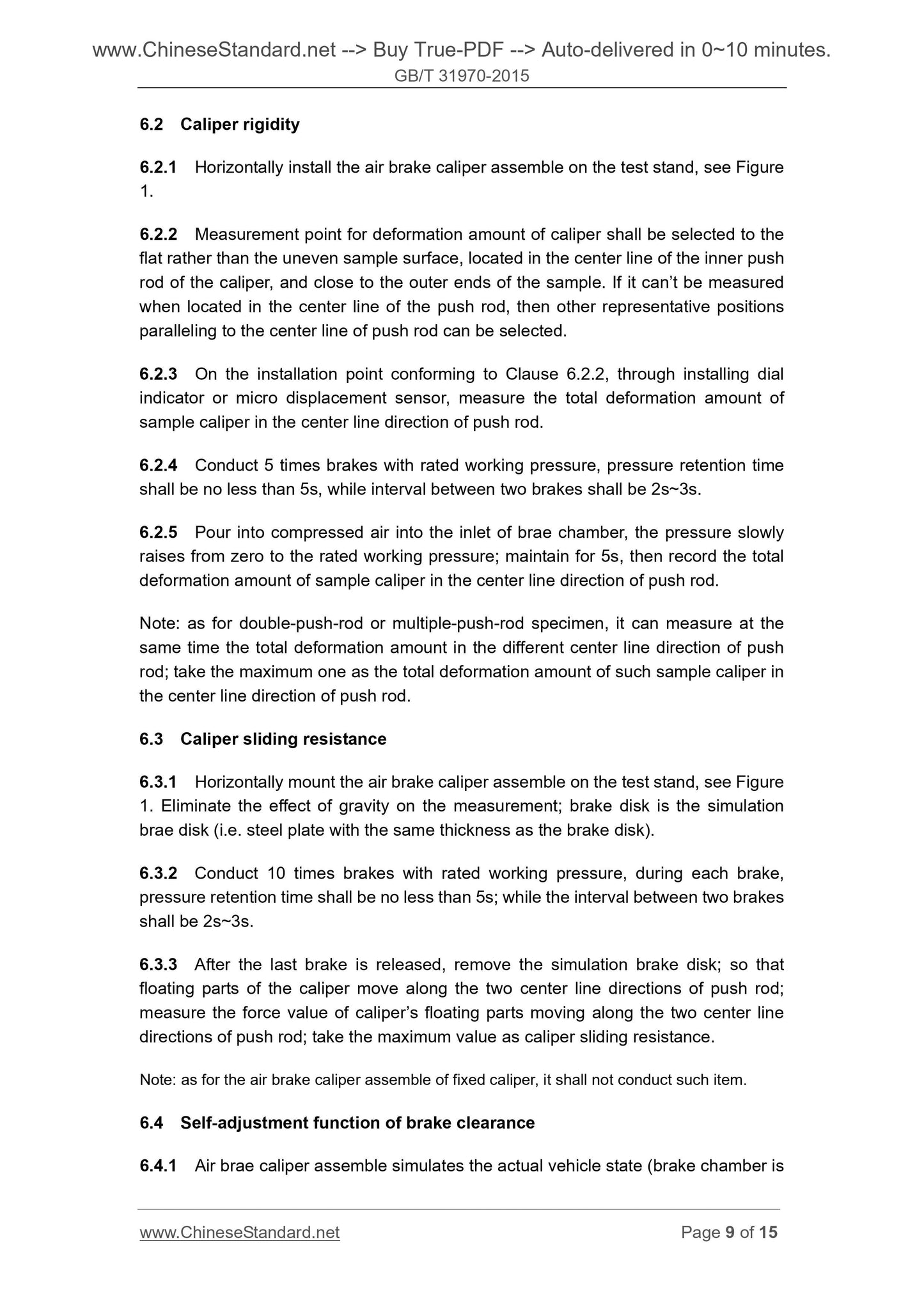1
/
of
6
www.ChineseStandard.us -- Field Test Asia Pte. Ltd.
GB/T 31970-2015 English PDF (GB/T31970-2015)
GB/T 31970-2015 English PDF (GB/T31970-2015)
Regular price
$90.00
Regular price
Sale price
$90.00
Unit price
/
per
Shipping calculated at checkout.
Couldn't load pickup availability
GB/T 31970-2015: Performance Requirements and Bench Test Methods for Air Brake Caliper Assemble of Automobile
Delivery: 9 seconds. Download (and Email) true-PDF + Invoice.Get Quotation: Click GB/T 31970-2015 (Self-service in 1-minute)
Newer / historical versions: GB/T 31970-2015
Preview True-PDF
Scope
This Standard specifies the performance requirements and bench test methods for airbrake caliper assemble of automobile.
This Standard is applicable to the air brake caliper assemble (excluding the brake
chamber) with compressed air as the working medium.
Basic Data
| Standard ID | GB/T 31970-2015 (GB/T31970-2015) |
| Description (Translated English) | Performance Requirements and Bench Test Methods for Air Brake Caliper Assemble of Automobile |
| Sector / Industry | National Standard (Recommended) |
| Classification of Chinese Standard | T24 |
| Classification of International Standard | 43.040.40 |
| Word Count Estimation | 9,995 |
| Date of Issue | 2015-09-11 |
| Date of Implementation | 2016-01-01 |
| Quoted Standard | GB/T 5620-2002; GB/T 10125-1997; QC/T 316 |
| Regulation (derived from) | National Standard Announcement 2015 No.25 |
| Issuing agency(ies) | General Administration of Quality Supervision, Inspection and Quarantine of the People's Republic of China, Standardization Administration of the People's Republic of China |
| Summary | This Standard specifies the automotive air brake caliper assembly performance requirements and test methods of. This Standard applies to the working medium is compressed air brake caliper assembly (does not include brake chamber). |
Share
